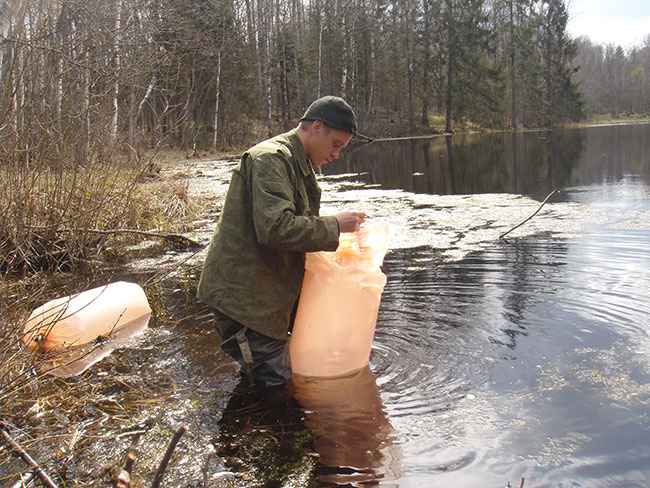
Features
Fish Health
Fish Nutrition
Research
Chlorella supplement improves pelyad survival rate: Russian scientists
January 10, 2020 By Vladislav Vorotnikov
 Chlorella may help hatcheries produce stronger broodstock.
Chlorella may help hatcheries produce stronger broodstock.
Supplementing fish feed with chlorella extract can boost the survival rate of pelyad (Coregonus peled) fingerlings by as much as 64 percent, a group of researchers from the Tomsk Polytechnic University in Russia said.
This estimate is based on a research of 30,000 pelyad fingerlings divided into three groups. The first group was given only a base starting diet, the second was given the same starting diet plus chlorella, and the third was given only chlorella.
“We made the first comparison in early May of 2019. The fingerlings in the basin where both starter diet and chlorella were given showed the greatest weight gain. In the third basin, when chlorella was given alone, the growth rate was higher as compared to fingerlings in the first basin, where only basic starter feed was given,” said Oksana Trofimchuk, a senior scientists of the Tomsk University.
In the end of the 45-day study, the fish from the third basin were weighting two times more than those that were receiving only started feed, Trofimchuk said. Moreover, supplementation of fish feed with chlorella has boosted the survival rate among pelyad.

Russian scientists believe Chlorella could help increase the survival rate of pelyad fingerlings.
“As compared to the group receiving basic feed alone, the group receiving both started feed and chlorella showed a 64 percent increase in survival rate. In the third group, where chlorella alone was administrated a 24 percent increase in survival rate was registered, as compared to the control,” Trofimchuk said.
Russian hatcheries are currently struggling to restore pelyad population in Siberia, especially in Ob basin, where it was undermined by years-long poaching, commented Rashid Khakimov, director of the government-run environmental protecting organization Tomsk Ecologia.
“On this background, the task to improve survival rate among fingerlings is on the front burner,” Khakimov said.
In 2019, scientists from the Tomsk Polytechnic University began a similar experiment to investigate the impact of supplementing feed with chlorella trench (Tinca tinca) fingerlings. In addition, the scientists are working on building the first biological reactor in the country where chlorella could be grown on industrial scale, said Alexey Yakovlev, one of the authors or the research study.
Print this page
Advertisement
- Skretting earmarks $2M for feed innovation
- From designer fish to virtual reality: How technology is changing the future of farming





